-

ACS’s FlashVolt heating system uses ultrafast Joule heating (UJH) to heat materials to extreme temperatures in milliseconds. UJH works by passing a current through a resistive material, which rapidly converts the electricity to heat—thousands of Kelvins in less than a second. This process opens many exciting possibilities, because it can heat to higher temperatures than traditional methods in a fraction of the time.
Ultrafast Joule heating has found many cutting-edge applications, and new ones are being discovered all the time. Let’s take a closer look at how UJH is advancing the world …
Read More
|
-

What is Ultrafast Joule Heating?
Ultrafast joule heating (UJH), sometimes known as flash joule heating or shockwave heating, is a relatively new way to heat materials to extremely high temperatures in milliseconds. It works by passing a current through a resistive material, which rapidly converts the electricity to heat—thousands of Kelvins in less than a second1. This opens many exciting possibilities, because it allows materials to be heated much faster and to higher temperatures than traditional methods.
UJH has been used for many specialized applications, such as sintering ceramics, …
Read More
|
-

What is 3D Printing?
3D printing is exactly what it sounds like: printing in three dimensions. But it’s so much more than that. Since the first 3D printing technique, stereolithography, was developed in the 1980s, 3D printing has exploded into a huge industry. At first, 3D printing was limited in the materials that could be printed and the structural properties that could be achieved. 3D printers were also very expensive. But, as with computers and cell phones, the technology advanced rapidly over a few decades. Now there are countless 3D printers available, including affordable options …
Read More
|
-

Many of the advanced technologies that permeate our world today would not be here without thermal management systems founded on specially designed materials. Have you ever noticed your cell phone getting hot as you edit a video to post on social media, especially if your phone is a few years old? Maybe your neighbors recently installed double-paned windows on their house to save on energy costs. We can all agree how incredible it is that space shuttles do not burn up when re-entering the atmosphere thanks to the array of ultralight and extremely insulative tiles surrounding …
Read More
|
-

If humankind is ever going to settle new planets and conduct expansive space exploration, we’re going to need radically new technologies. Graphene is the perfect material to step in and lead the way. Graphene is abundant on our planet and, potentially, others; it’s also lightweight, easy to manipulate, versatile, and super strong. One single atomic layer of graphene is 200 times stronger than steel, better at conducting heat and electricity than any other material, and allows 97% of white light to pass through, making it an ideal material for solar energy. Graphene’s discovery in 2004 …
Read More
|
-

The 2020 COVID-19 crisis has created a global conversation about personal protective equipment, commonly known as PPE. Individuals who have never given PPE a single thought are now freely discussing the differences between standard masks and certified N95 masks and their respective abilities to protect against infection. While PPE is, for the vast majority of people, a new topic, for laboratory workers, having the right PPE has been at the forefront of lab safety for years. Advanced chemical research, especially research involving nanomaterials, requires careful attention to the latest …
Read More
|
-
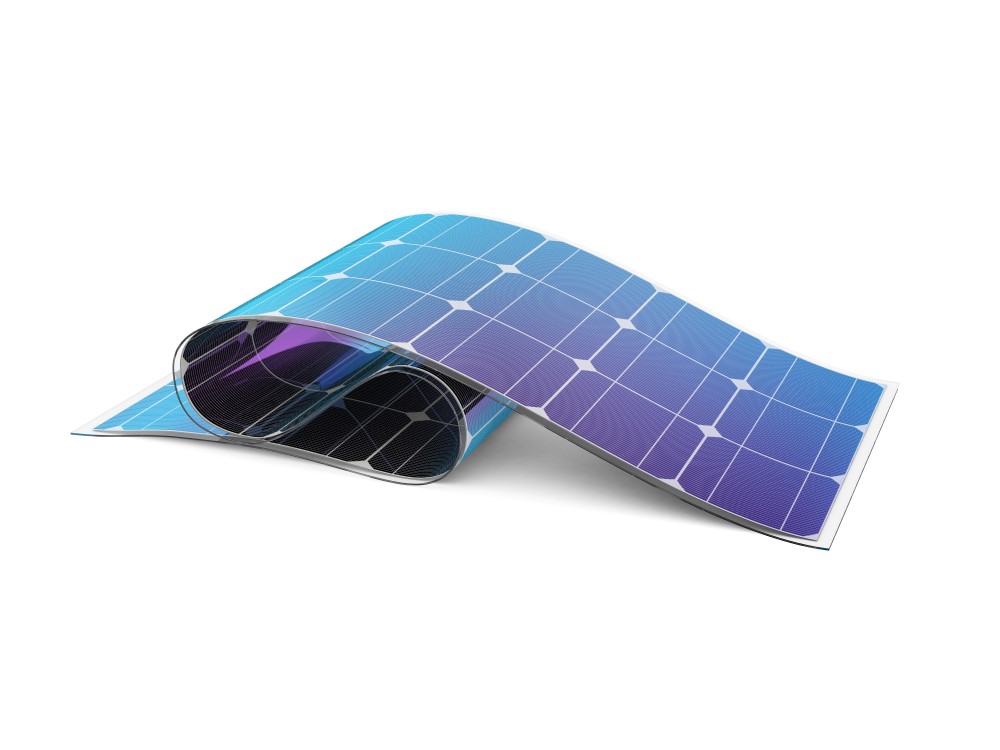
What’s so revolutionary about graphene, a material composed of 100% carbon? Hasn’t carbon been around quite literally forever? Carbon is one of the basic building blocks of life and is found abundantly in all corners of the world. But in 2004, when two researchers at the University of Manchester exfoliated one layer of carbon atoms from a chunk of ubiquitous soft carbon graphite, everything changed. The result was graphene, a single layer of bonded carbon atoms. It’s the world’s first 2D material; one sheet of graphene is one atom thick. Every single carbon atom in graphene is …
Read More
|
-

Nanoparticles are microscopic particles that, in at least one dimension, measure less than 100nm. Nanoparticles have captured the attention of researchers and technicians around the world in nearly every field because they represent a bridge between atomic structures and bulk materials. Scientists are discovering that many properties are highly size-dependent; the percentage of atoms on the surface area of a particle has a significant impact on properties and performance. As a result, nanoparticles demonstrate different, sometimes vastly different, properties from their bulk counterparts.
…
Read More
|
-

Graphene is the strongest, thinnest, lightest material known. With the thickness of a single atom, remarkable electrical and thermal conductivity, and strength greater than steel, scientists and researchers across the globe are enthusiastically searching for ways to integrate this wonder material into twenty-first century textiles. To get a handle on the potential graphene offers for the fashion industry, it’s important to first understand the distinctions between wearables, smart clothing, and e-textiles.
Wearables and smart clothing are physical devices with sensors that provide …
Read More
|
-

In a world that’s increasingly run on electronics, finding inexpensive, renewable energy that’s also versatile and portable has become the number one priority for researchers near and far. One of the most obvious sources for low-cost, abundant energy is, of course, the sun, but converting the sun’s energy into usable electricity efficiently and inexpensively has proven to be a challenge. And, while it’s true that solar power technology is advancing at a rapid pace, it’s still difficult to imagine using the sun exclusively to power portable electronic devices such as phones, tablets, …
Read More
|
-

For more than 70 years, antibiotics have been used successfully to treat patients with a variety of bacterial diseases, but this flood of antibiotic usage has had one very significant unintended consequence: bacteria have evolved to become increasingly resistant to antibiotics. Antibiotic-resistant bacteria are proving to be a serious, growing global health threat. In addition, it’s important to note that recent years have seen no significant advances in antibiotics. In summary, the world has a limited number of antibiotics and the number of bacteria that are resistant to this arsenal is …
Read More
|
-

Since its discovery in 2004, graphene has been changing the technological world with its near-miraculous properties and diverse applications. On its own, it’s invisible to the naked eye, but it’s revolutionizing everything from tennis rackets to touchscreens and sports gear to solar cells. While it might sound like science fiction, the limitless business potential of graphene is very real, and getting it is easier than you might think. Keep reading to learn why you can count on ACS Material, suppliers of top-quality graphene products, for your industrial and commercial needs. But first, …
Read More
|
-

What's the difference between Graphene and Graphyne?
Impossibly tiny, unseen particles that can be used for the applications described below as well as many other things may seem like something out of futuristic science fiction stories, but, in fact, a new class of materials is reshaping the world as we know it today. Nanomaterials, defined as products no larger than 100 nanometers thick (for comparison, a human hair is roughly 80,000 nanometers thick), are responsible for a relentless coalition of innovations that promise to solve many of the world’s most vexing problems. Here are some …
Read More
|
-
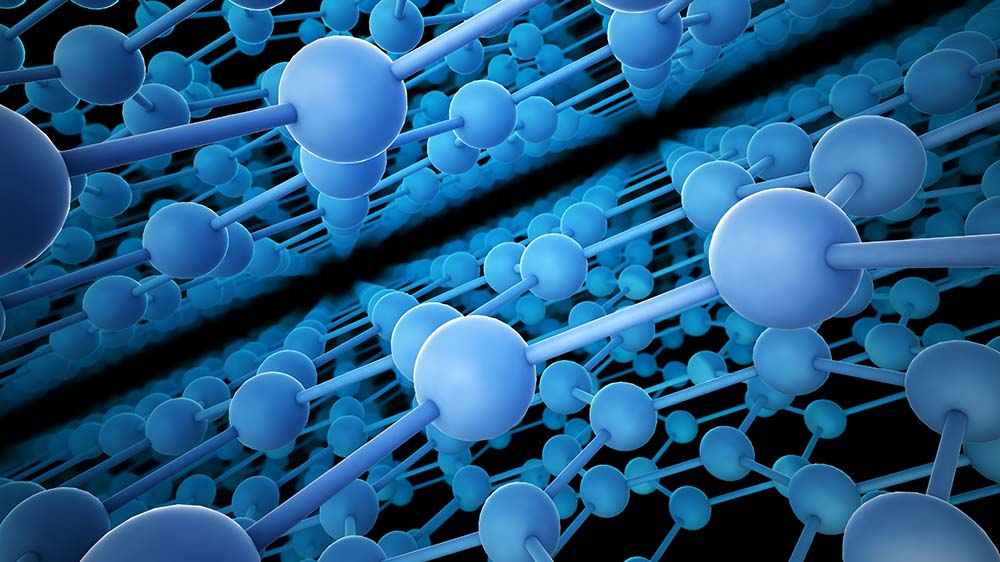
Graphene Nanoplatelets
In 2004, two researchers at the University of Manchester, Andre Geim and Kostya Novoselov, used a piece of tape to separate a single-atom-thick layer of carbon from graphite and successfully transferred that layer onto a thin SiO wafer. This single layer of carbon atoms bonded together in a simple hexagonal structure is called graphene and its isolation earned Geim and Novoselov the 2010 Nobel Prize in physics. Since then, graphene has captured the imaginations of innovators, engineers, and researchers around the globe because of its unique and exciting combination of …
Read More
|
-

The World of Carbon
Peek deep inside a dark, chalky chunk of graphite and a clear, bright diamond and you’ll discover a startling truth: these radically different materials are, in fact, fundamentally the same–they’re both made exclusively from carbon. The different properties of graphite and diamonds are the result of the way individual carbon atoms bond together.
These different bonding patterns are called allotropes of carbon. When carbon atoms bond trigonally to three other carbon atoms in a plane of hexagonal rings and stacks of these planes are held together with van der Waals …
Read More
|
-

Modern engineered nanomaterials are having a significant and exciting impact in a wide variety of industries, but nowhere is this impact more profound than in the fields of biology and medicine. Nanoparticles, such as graphene and other nanomaterials, have the potential to revolutionize medicine and create completely new classes of drugs and medical devices.
Biomaterials: A Brief Overview
A biomaterial is any substance that can be used to repair, augment, stimulate, or replace any organ, tissue, or function in any system in the body. Biomaterials are used in direct contact with living …
Read More
|
-

Throughout human history, the discovery of new technology has marked milestones and turning points. The making of stone tools, the smelting of metals, and the making of building materials represent the cutting-edge of ancient times. In more recent times, industrial diamond, nanotechnology, aerogels, and ballistic materials are expanding our possibilities to exciting new inventive and technological heights. What once seemed like science fiction is now possible with such materials, and few are as captivating and practical as graphene. Read on to learn about this exciting material and how it’s …
Read More
|
-

Carbon is the most fundamental building block of life on earth. Its various hybridized states and unique structure enables diverse bonding with nearly all other elements. In addition, carbon has numerous allotropes, more than any other element and more are being discovered all the time. More specifically, 2-D allotropes of carbon are revolutionizing nanoscience at every level. The search is on for 2-D carbon allotropes with high stability, increased surface area, and intriguing properties that allow for high directional electrical conductivity as well as use in a wide range of optical, …
Read More
|
-

What Is Graphene?
There’s a possibility you’ve never heard of graphene, but the chances of avoiding it become slimmer with each passing day. That’s because this revolutionary material is being produced in great volumes by graphene manufacturers, further lengthening its impressive list of characteristics and properties available for a myriad of applications. Graphene is a 2D material that consists of a single layer of carbon atoms arranged in a hexagonal pattern. It is is both incredibly thin and strong, and its advantageous properties go far beyond. Since its discovery in 2004 at the …
Read More
|
-

Since it was first created in 2004, graphene has mesmerized scientists with its rare qualities and seemingly endless potential. At exactly one atom in thickness, graphene is perhaps the strongest material on Earth (about 100 times the strength of steel) It is a very efficient conductor of heat and electricity, and it is nearly transparent. While graphene itself is the subject of research for use in semiconductor, electronics, solar energy, aerospace, and other industries, graphene manufactures are working on developing hybrids that show a similar potential for revolutionizing a number of …
Read More
|
-

Graphene is quickly gaining acclaim for its dynamic properties and versatility of usage in the fields of manufacturing, electronics, and medicine. Graphene is a material made from a single layer of carbon atoms that is stronger than steel, lighter than paper, more flexible than rubber, and harder than diamond. It features electron mobility that is 100 times higher than silicon, meaning it could one day replace it as a primary resource in computing. It conducts heat better than diamonds, conducts electricity more efficiently than copper, repels water, and absorbs 2.3% of light. Its miraculous …
Read More
|
-

The inability for people to access clean water is an ongoing crisis in many parts of our world today. Many people across the globe do not have adequate drinking water, and even more numbers of people lack proper sanitation systems in areas where they live. In many developing countries sewage is poured, untreated, directly into water sources. Meanwhile, in more developed economies, drinking water sources are contaminated by agricultural runoff, industrial waste, and atmospheric inputs resulting from brush fires and the effects of global warming. All of this results in an increased demand for a …
Read More
|
-

Perhaps the strongest, thinnest, and most conductive material ever produced, graphene has the potential to revolutionize several industries. Comprised of carbon atoms in a honeycomb pattern — and measuring only one atom in thickness — graphene will change how we think about energy generation, batteries, sensors, and everything else that involves the production, conduction, and transfer of energy. As the demand for graphene grows, so does the interest in its mass production. That is why chemical vapor deposition (CVD) — the process by which graphene can be produced on a large scale — …
Read More
|
-

If you haven’t yet heard of a material called graphene, you likely will soon enough. Graphene is a revolutionary material made up of a single layer of graphite atoms arranged as a single sheet. It is known as the strongest, lightest, thinnest, and hardest material on the planet and its source is virtually limitless since it’s made of carbon, the fourth most common element in the known universe. Graphene has hundreds of practical applications in fields ranging from the textile industry to aerospace applications, and in computing and electronics in general. As a result, graphene …
Read More
|
-

Graphene is the new “wonder material” of 2019. Along with having lightweight and amazing thermal and electrical conducting properties, graphene is the strongest, thinnest, and one of the most flexible materials in the textile industry. The material is being used to manufacture the next generation of sportswear. Here is a guide detailing how graphene is being used to enhance fabrics in the textile industry.
Graphene is derived from carbon, which is sliced into tranches. These tranches are thinner than a single human hair and are invisible to the naked eye. Graphene, comprised of one layer …
Read More
|
-

Graphene is a two-dimensional sheet of densely packed carbon atoms arranged in a single layer. Its structure resembles a crystal honeycomb lattice or chicken wire fence of sorts. Graphene is a considerably large aromatic molecule in the flat polycyclic aromatic hydrocarbon family. It is made up of numerous carbon allotropes, like graphite, carbon nanotubes, and other fullerenes. In this blog we will discuss a bit more on the history of this fascinating material.
Introduction
Graphene is thought of as an infinite alternant of polycyclic aromatic hydrocarbon. The best graphene in the purest …
Read More
|
-

If you haven’t yet heard of graphene, you probably will soon enough. Graphene, the world’s strongest, lightest, thinnest material, has the potential to revolutionize manufacturing, science, and technology. Its applications are endless due to its diverse beneficial properties which allow it to be used across many industries including medical and aerospace. Graphene is only a single atom thick, but it’s 200 times stronger than steel. It’s derived entirely of carbon, which happens to be one of the most plentiful substances in the universe.
What is graphene exactly? Graphene is a …
Read More
|
-

Y-type Zeolites
Aug 19, 2019 | ACS MATERIAL LLC
Dealuminated ultrastable Y zeolites have increasingly attracted attention as good adsorbents and stable acid catalysts. These materials exhibit high thermal and hydrothermal stability, as well as higher catalytic activity than that of aluminum-rich synthesized Y zeolites. The ultrastable Y zeolite (USY) in fluid cracking catalysis is commonly stabilized by ion-exchange with rare earth (RE) cations. These rare earth ultrastable Y zeolites, also known as REUSY, demonstrate how rare earth exchange can provide much needed hydrothermal stability.
Introduction
Y zeolite (IZA structure, FAU …
Read More
|
-

ZSM-5
The ZSM-5 molecular sieve boasts unique and exceptional properties, which are widely employed in important processes and applications across a broad range of industries. Commonly used in converting methanol to gasoline and diesel as well as oil refining, ZSM-5 has proved superior to amorphous solid acid catalysts in reactions such as xylene isomerization, toluene disproportionation and toluene alkylation etc. Upon ion exchange or modification, H-ZSM-5 zeolites can be derived to also possess enhanced para-selectivity. All in all, the high versatility of this zeolite makes it a truly …
Read More
|
-

Graphene is on the tip of every radio frequency researcher’s tongue and for good reason. Electronic technologies are speeding towards increasingly faster and smaller computing, communication and automation. These advancements have required silicon-based transistors to become more and more miniature. Today’s circuitry is smaller, faster and more efficient than ever before, but it’s widely believed that the drive for smaller and more powerful has a natural technological limit: current materials cannot infinitely get both smaller and faster. To continue on this path, new materials are …
Read More
|
-

Zeolites, also commonly known as molecular sieves, are crystalline microporous materials primarily made up of SiO4and AlO4 corner-sharing tetrahedral building units. These are grown to form three-dimensional (3D) crystalline frameworks with well-defined channels and cavities of molecular dimensions. In application, their pore openings are utilized to selectively adsorb molecules smaller than the pore size and reject any molecules larger than the pore size. There are many types of zeolites which have been developed for the adsorption of various specific molecule sizes. These various types of …
Read More
|
-

TiO2 nanomaterial is notable for its large specific surface area and unique chemical, physical, optical and electronic properties. It is also non-toxic and environmentally friendly in nature and demonstrates excellent biocompatibility and stability. These unique properties make it useful for a wide array of applications including photocatalysis, gas and humidity sensors, water treatment, solar cells, photochemical cells and protective coatings on optical elements. TiO2 is also widely exploited as a pigment providing whiteness and opacity given by its high brightness and very high refractive …
Read More
|
-
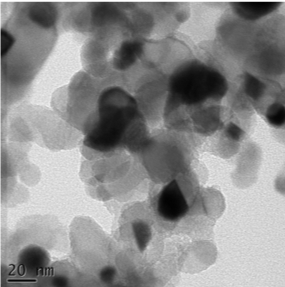
Titanium nitride (TiN), an alternative plasmonic material to gold, possesses unique physiochemical properties most notable in plasmonic devices. A compatible material within biological environments and the semiconductor industry, TiN exhibits superior properties to noble metals such as high temperature durability, chemical stability, corrosion resistance, low cost and high mechanical hardness. TiN is widely used in microelectronics, biomedical devices and food-contact applications. It proceeds to sparking great interest in fields such as plasmonic photo-thermal therapy, …
Read More
|
-

A two-dimensional (2D) material similar to graphene, Black Phosphorus (BP) has many unique and noteworthy characteristics. The in-plane anisotropy deriving from its puckered orthorhombic structure affords extraordinary electronic, optical, transport, thermal and mechanical properties. Additionally, its high carrier mobility, tunability and moderate direct band gap makes BP a material of choice in electronics and optoelectronics. Furthermore, its biodegradability and biocompatibility makes BP suitable for applications in the biomedical field.14
Introduction
Phosphorus, an extraordinary …
Read More
|
-

Titanium Dioxide (TiO2) nanomaterials have been used primarily as photocatalysts over past few decades, however, its wide band gap largely limited TiO2 activity to the UV region of the solar spectrum. The discovery of ‘‘black’’ titanium dioxide nanoparticles with visible infrared absorption opened up all new possibilities in this sector. Since the discovery of black titanium dioxide, world-wide research initiatives have been launched for the purpose of narrowing the band gap and overcoming that issue. Success in this endeavor could positively affect a wide array of applications in a …
Read More
|
-

Lithium-ion batteries (LIB’s) are well-suited for fully electric and hybrid electric vehicles due to their high specific energy and energy density in comparison to other rechargeable cell options, however, their suitability depends on the quality of the anode material within. Silicon Carbide (Si/C) composites are a semi conductive material where silicon is highly dispersed within a carbon matrix. Si/C composites exhibit not only acceptable faradaic yield at the first cycle, but also large capacity and good rechargeability. These are essential and highly desirable properties making Si/C …
Read More
|
-

Mordenite (MOR) is a high-silica molecular sieve with two pore channels. It is synthesized by the hydrothermal method and has been effectively used in the adsorption and separation of gas or liquid mixtures involving acidic components. As a catalyst, mordenite zeolite is used in various important industrial reactions like hydrocracking, hydro-isomerization, alkylation, reforming and cracking.
Introduction
Mordeniteis a silica-rich, large-pore zeolite that occurs readily in nature. Although mordenite occurs in nature as a mineral, synthetic mordenites are better suited in terms of …
Read More
|
-

SSZ-13 Zeolite
Oct 09, 2018 | ACS MATERIAL LLC
SSZ-13 molecular sieve is prepared by the hydrothermal method with silica sol, aluminium sulphate, sodium hydroxide and deionized water as raw materials, and N, N, N-trimethyl-l-adamant ammonium hydroxide as a template. Due to its specific surface area and distinctive eight-membered ring structure, SSZ-13 shows good applicability in separating N2 from CO2 in flue gas streams. Cation exchanged SSZ-13 can yield higher separation efficiency and it can also be used as a good catalyst in NH3 selective catalytic reduction (NH3-SCR), propylene production from ethylene, and methanol-to-olefins (MTO) …
Read More
|
-

Medium-pore TS-1 is a highly versatile zeolite with MFI structure that has been applied as an efficient catalyst in diverse industrial applications. TS-1 demonstrates unique catalytic performance in oxidation reactions involving H2O2 as an oxidant. TS-1 catalyst is highly effective in the selective oxidation of various organic substrates with hydrogen peroxide, including hydroxylation of aromatics, epoxidation of alkenes, ammoximation of ketones, oxidation of alkanes and alcohols, etc.
Introduction
As an environmentally benign catalyst, the successful synthesis of titanium silicalite …
Read More
|
-

Hexagonal Boron Nitride (h-BN) has recently gained strong interest as a strategic component in engineering Van der Waals heterostructures with two dimensional crystals such as graphene. h-BN film can be synthesized by chemical vapor deposition (CVD) on catalytic substrates and the atomic layers can be controlled by changing the precursors, growth time and cooling rates etc. The unique properties of h-BN film offer promising potential in physical, mechanical, optical, electronic and hybrid applications.
Introduction
Boron Nitride (BN) is a typical III-V group compound with a …
Read More
|
-

SBA-15 molecular sieve is prepared by the hydrothermal method with triblock polymer pluronic P123 (EO20-PO70EO20), hydrochloric acid, tetraethyl orthosilicate (TEOS) and deionized water as raw materials. SBA-15 has an ordered structure that contains uni-dimensional mesopores of uniform size ranging from about 4 to 30 nm.1 Unique properties of SBA-15 include uniform and adjustable pore size, thick pore walls, superior hydrothermal/thermal and mechanical stability, high surface area, high pore volume and open pore structure. All of these properties render it highly valuable in a wide variety of …
Read More
|
-

Zeolites, which are also called molecular sieves, are crystalline microporous materials formed primarily by SiO4 and AlO4 corner-sharing tetrahedral building units that form three-dimensional (3D) frameworks with well-defined channels and cavities of molecular dimensions. The void space within the crystal allows zeolites to discriminate molecules based on their size or geometric shape. With variable chemical compositions and unique pore topologies, zeolites have been utilized in a wide range of industrial applications such as adsorption/separation, ion-exchange processes and also as catalysts …
Read More
|
-

GlowDots
May 29, 2018 | ACS MATERIAL LLC
Facile synthesis of multi-colored, protein-based, metal-free, stable, nontoxic and pH sensitive advanced functional nanoparticles (GlowDots) is now a reality. Controlled cross-linking of bovine serum albumin has resulted in the formation of spherical nanoparticles of 35 nm in diameter with a size distribution of ±10 nm. The nanoparticles are then conjugated with specific dyes to produce white-emitting particles with tunable excitation wavelengths. These nanoparticles are a chemical novelty because their particle size, size distribution, stability, surface chemistry and emission properties …
Read More
|
-

FluoDots
May 22, 2019 | ACS MATERIAL LLC
FluoDots are single protein nanoparticles labeled with particular fluorescent dyes for imaging and other applications. They are composed of a central protein core surrounded by a covalently attached lipid layer. FluoDots retain the structure and functions of the protein embedded in the core, however the particles have increased thermal stability and a longer shelf life. Numerous carboxylic groups present on the surface of FluoDots are available for further chemical modification of the particles. FluoDot size is tunable at 2.5 Å resolution and the color is tuned independently of the size, …
Read More
|
-
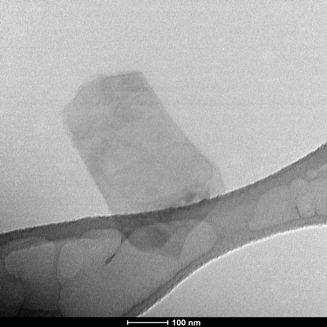
Applications of graphene and its two-dimensional counterparts (MoS2, BN) in the biomedical and healthcare sectors require water dispersions and biocompatible derivatives.1,2 Although the successful exfoliation of these bulk materials using organic solvents,3,4 ionic liquids,5,6 or surfactants7 has been reported, the biocompatibility of the resulting product, quality, expense, and environmental impact still remain unaddressed. 8
Introduction
In an effort to produce biocompatible graphene, proteins were recently used to yield aqueous graphene dispersions using two separate methods, shear and …
Read More
|
-

Synthesizing the graphene-bio interface has become an increasingly important step for biological applications. Touted as the material of the millennium, graphene has undergone rapid development focusing on optoelectronic applications for lightweight and ultrafast electronic devices. Properties such as high surface area, light weight, high mechanical strength and fluorescence also make graphene highly attractive for biological and health care applications. Colloidal stability and low toxicity are vital for the implementation of graphene materials for such applications like biosensors, drug …
Read More
|
-

Graphene is typically produced with either a top-down or bottom-up approach; however, manufacturing a vast amount of the material is beneficial in technical industries. Creating high-quality and high-yield graphene, such as graphene nanoplatelets and dispersions, can push forward its use in a variety of industrial applications such as electronics, touchscreens and light-emitting diodes. This report will explain the different methods used to synthesize a large amount of these graphene materials and its benefits in industrial applications.
Introduction
Graphene is a one-atom-thick, …
Read More
|
-

Carbon nanostructures have expanded into a nice range of materials containing electrical and thermal conductivity along with other unique properties. Carbon nanomaterials, such as nanohorns, nanofibers and the more popular nanotubes, all have different shapes and features that set them apart from one another. Each nanomaterial incorporates graphene within its structure which adds to their distinctive characteristics and have been researched for use in electronics, sensors and batteries. Here, we will focus on the properties of these carbon materials measured on a nanometer scale and their …
Read More
|
-

Since the discovery of graphene, other two-dimensional materials have gained further interest in hopes of finding similar extraordinary properties. Materials with a similar structure to that of graphene, such as black phosphorus and transition metal dichalcogenides, have been researched to potentially be used in applications comparable such as electronics, batteries, optical devices and more. With the ability to absorb light from visible to infrared, the possession of bandgaps, and a low friction coefficient, these 2D materials possess characteristics that sets them apart from its …
Read More
|
-

Mesoporous silica materials have gained much attention due to its ordered pore structures and ability to be controlled at micrometer and nanometer scales. The material made excellent candidates to many applications such as drug delivery, adsorption and waste water treatment. The high surface area and narrow pore size distribution make this material suitable as catalysts and templates for other materials. Here, we will discuss what makes this material so unique, the different methods that was used to synthesize them and some of their applications.
Introduction
Mesoporous silicas (MS) are …
Read More
|
-

Fabricating graphene molecularly through Chemical Vapor Deposition (CVD) has been highly desirable and popular as it can produce the material with a large surface area. The CVD method involves graphene growth on a metal catalyst and the transfer of that graphene onto different substrates for various application purposes. Transferring the material is quite common and can be done in different ways, such as utilizing a thermal release tape and PMMA. This report will explain both techniques and its ease in transferring graphene.
Introduction
Since the graphene market has been on the rise over …
Read More
|
-
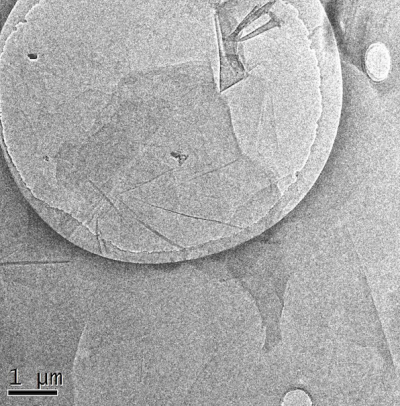
Commercializing graphene has been a main interest in research and technology, but its high cost and some difficulty in producing large quantities of the material remains to be a topic of discussion. However, graphene oxide is exceptionally feasible in creating a scalable production; in fact, it has been an attractive precursor material for a large-scale production of graphene-based materials. Here, we discuss more about graphene oxide, its synthesis and how it can be an excellent material for various applications.
Introduction to Graphene Oxide
Graphene is a two-dimensional, …
Read More
|
-

Porous organic materials display unique qualities that can potentially be used in various applications. New classes of these porous materials, such as metal-organic frameworks and covalent organic frameworks, have gained attention due to its distinctive attributes. Thousands of new frameworks have since been discovered after its first discovery and further researched to gain more insight on their properties. This article will discuss these materials’ structure and synthesis as well as their promising benefits in different applications.
Introduction
Porous materials have played an …
Read More
|
-

Upconverting nanoparticles have attracted a large amount of interest due to their ability to partake in bioimaging and therapy applications. Upconversions display anti-Stokes shifts in which the summed, single emitted photon has a higher energy than the incident photons. While this is an unnatural phenomenon, rare earth metals have been used to assist in upconversions due to its multiple excitation levels. With this ability, these nanoparticles can be used to possibly overcome limitations (as found in quantum dots) when displaying fluorescent properties. In this article, we will discuss …
Read More
|
-

CVD Graphene
Aug 01, 2017 | ACS MATERIAL LLC
Graphene, as manufactured by the CVD method, has been in the forefront of many research initiatives due to the beneficial extremes it exhibits for many different characteristics. Synthesis requires a catalyst (usually copper or nickel), carrier gases (usually from H2, Ar), feed material (methane) and a proper atmospheric environment. The list of potential use-cases for this remarkable substance grows daily, and techniques for growing, handling and transferring the graphene are also increasing. In this paper, we will explore these aspects of CVD graphene and look at likely future …
Read More
|
-

Graphene is defined as a single-atomic-layer, 2-dimensional allotrope of carbon atom. This material has superlative properties of strength, elasticity, electrical conductivity, and thermal conductivity. It can potentially provide a higher energy density than that of a common supercapacitor. There are multiple ways to prepare graphene using one of the top-down or bottom-up categorical methods but the most popular within these categories would be the chemical vapor deposition (CVD) as it can produce high-quality graphene film which can be transferred onto a desired substrate …
Read More
|